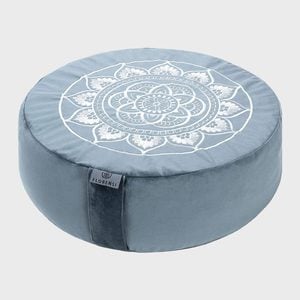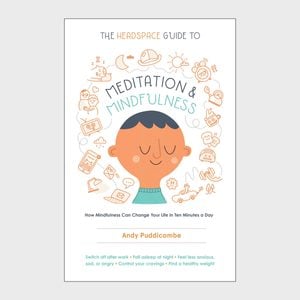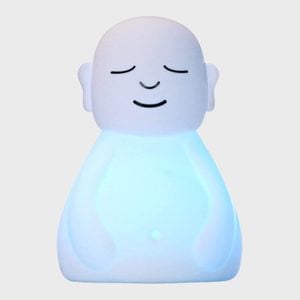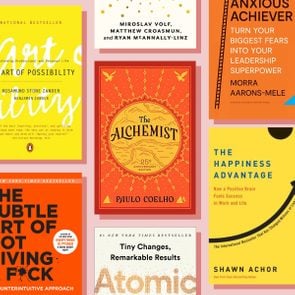How to Meditate for Beginners
Updated: Mar. 12, 2024

There are plenty of research-backed reasons to learn how to meditate, and there isn't much of a learning curve if you follow our tips
Life is undeniably stressful, and we’re constantly inundated with articles, Instagram Reels and TikToks offering new year, new you philosophies and mood-supporting supplements that may help reduce stress. But there’s something we have available to us 24/7 that is completely free, accessible to everyone and proven to reduce stress: meditation. If you don’t know how to meditate, don’t worry. It’s always a good day to have a positive attitude, try new things and explore how to be happier at home and how to be happy in a world that is increasingly stressful.
Meditation helps with stress in the moment, but a regular practice can actually change your brain. Harvard neuroscientist Sara Lazar, PhD, did a study to determine if meditation increases gray matter in the brain. And then, just to be sure, she did a second study. Results showed that just eight weeks of daily meditation can change the brain to process stress differently, leading to decreased anxiety and depression and an overall increase in quality of life.
“Minds are busy all the time,” says Nina Smiley, PhD, director of mindfulness programming at Mohonk Mountain House and co-author of The Three Minute Meditator and Mindfulness in Nature. “Minds are constantly thinking, planning, perceiving beauty and figuring things out, and having a mind that’s constantly in motion can be exhausting. It can be stressful. Meditation is a skill that helps us begin to work with the mind as we learn to be present in a different way, bringing calmness and clarity into the moment, whatever it may be.”
So, where do you begin? To get in a better mental space, you can download free meditation apps, follow strategies for practicing gratitude or start with a meditation for happiness or a sleep meditation that’ll quiet your mind before you catch some z’s. But if you’re just starting out, it helps to get the basics. That’s why we’ve created this step-by-step guide. It’ll teach you how to meditate so you can start reaping the benefits of this practice.
Get Reader’s Digest’s Read Up newsletter for more happiness tips, humor, cleaning, travel, tech and fun facts all week long.
On This Page
What is meditation?
Meditation is a practice of focused concentration where an individual uses various techniques to achieve a mentally clear, grounded, and relaxed state.
“Many people have this idea that meditation makes you fall into a hypnotic state, but on the contrary, you’re actually very aware during meditation,” explains Lama Tsomo, one of the first American women to be ordained as a Tibetan Buddhist lama. She’s a psychologist, author and co-founder of the Namchak Foundation, a Tibetan Buddhist organization that offers free meditation courses, videos and retreats.
Contrary to what you may think you know about how to meditate properly, the goal isn’t to completely clear your mind of thought. “You’re aware of your thoughts coming and going, the breath coming and going,” she says. “But rather than following your thoughts, you stay rooted in the present moment.”
In other words, you remain mindful of the thoughts that enter your head during meditation—but don’t confuse mindfulness and meditation. They’re not interchangeable. “Mindfulness is a meta-awareness of the wandering mind,” Tsomo says, “which is a component of meditation.”
What does meditation do?

Meditation can provide you with a sense of calmness and balance, which provides benefits to your emotional well-being and overall physical health.
Studies show meditation can help with conditions such as insomnia, anxiety and depression, but it can also help manage chronic pain and even alleviate the symptoms of low-back pain. If you’re trying to be happy but can’t quite succeed, give meditation a go.
According to Tara Well, PhD, associate professor of psychology at Columbia University’s Barnard College, the benefits of meditation below are just a few of the many reasons to start a meditation practice.
- Reduced stress: Many styles of meditation have been shown to reduce stress, and meditation can also reduce symptoms in people with stress-triggered medical conditions.
- Better emotional health: Not only does meditation reduce negative thoughts, but it can also alleviate depression by decreasing levels of inflammatory cytokines, small proteins that contribute to depression.
- Enhanced self-awareness: Self-inquiry and related styles of meditation can increase self-awareness, which can be the starting point for making positive changes in your life.
- Longer attention span: Focused-attention meditation is like weight lifting for your attention span. It helps increase the strength and endurance of your attention.
- Less risk of age-related memory loss: The improved focus you get from a regular meditation practice can boost your memory and mental clarity. It may also help fight age-related memory loss and dementia.
- Increased kindness: Metta meditation (aka loving-kindness meditation) increases positivity, empathy and compassionate behavior toward others.
- Addiction assistance: Meditation helps develop awareness, which can help manage triggers of addictive impulses.
- Improved sleep: Meditation for sleep really works. Research on mindfulness-based meditation programs found that people who meditated stayed asleep longer and had improved insomnia severity compared with those who had an unmedicated control condition.
- Better pain tolerance: A meta-analysis of studies concluded that meditation was associated with decreased pain. Meditators and non-meditators experienced the same causes of pain, but meditators showed a greater ability to cope with pain and even experienced a reduced sensation of pain.
- Reduced blood pressure: Blood pressure decreases during meditation, and in individuals who meditate regularly, there’s a reduction in the risk of heart disease.
What type of meditation is best for you?
The type of meditation that is best for you is the one you’ll enjoy doing. If you enjoy it, you’re more likely to develop a consistent practice. “The practice of meditation dates back thousands of years, and many forms of meditation originated in Eastern traditions,” Well says. “Currently, the term meditation refers to various practices that help the individual focus on mind and body integration.”
You have a lot of options when it comes to meditation, starting with whether you forge ahead on your own or opt for guided meditation in which an instructor guides you through the steps. Beyond that, it helps to know some basic types of meditation, like the forms below.
Focused-attention meditation
With this type of meditation, the emphasis is on ridding your mind of distractions. Concentrate your attention on a single object, thought, sound or visualization. You might focus on breathing, a mantra or a calming sound.
Open-monitoring meditation
When you’re doing open-monitoring meditation, you are encouraged to broaden your awareness of all aspects of your environment, train of thought and sense of self. This may include becoming aware of suppressed thoughts, feelings or impulses. The key is to observe without judgment.
Mindfulness meditation
One of the most common techniques, mindfulness meditation has three main components:
- Attention: Focusing on the present moment
- Open-awareness: Broadening your attention and curiosity
- Kind-intention: Treating yourself and anyone or anything that pops into your awareness with kindness.
Mirror meditation
This type combines mindfulness, focused-attention and open-monitoring meditations. You use your image as a focal point and use your breath to stay present with yourself. Keep your awareness open to whatever thoughts and emotions come up. Think of your thoughts and emotions as clouds drifting across the sky as you watch yourself in the mirror.
How to meditate
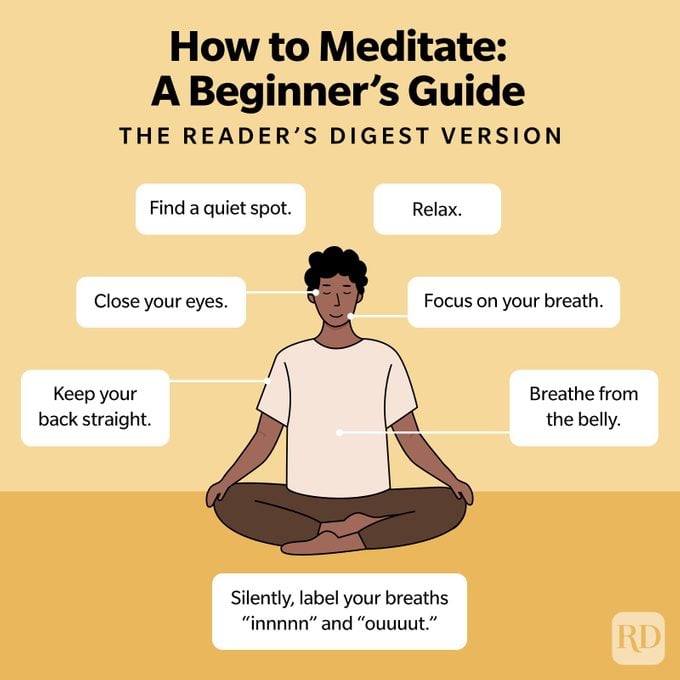
Ready to clear your mind and lower your skyrocketing stress levels? You can meditate anywhere, anytime. All you really need is some quiet and your breath, which goes everywhere with you.
Start with a mini digital detox: Step away from your phone and computer. From there, it’s time to learn how to meditate. Follow the steps Smiley suggests for those just beginning a meditation practice:
- Find a quiet spot where you can sit down and get comfortable.
- Close your eyes or gently gaze downward.
- Become aware of your breath.
- Breathe from the belly with a full, gentle breath in and a full, gentle breath out. Find your own rhythm. Find your own pace.
- Relax as you settle into the moment.
- Silently, label your inhalation innnnn, almost filling the breath with the word. Label your exhalation ouuuut.
For even more guidance, you can sign up for a guided meditation app like Calm or Headspace, which offer dozens of meditations to fit your schedule and state of mind. Or listen to one of the Namchak Foundation’s free guided meditations or sign up for one of the organization’s free four-week e-courses.
Expert tips on how to meditate for beginners
We get it: Meditation is intimidating. But the tips below will help you form a meditation habit that enhances your life.
Start small
One key to establishing a meditation practice is to start small. Just as beginner runners start with a mile, not a marathon, beginner meditators shouldn’t aim for an hour when they’re just learning.
And give yourself a break when it comes to fitting meditation into a busy schedule. Time-management tips will help you prioritize the things that matter, and your health and well-being should be at the top of the list—but meditation doesn’t have to be an hour-long event. Tsomo says we can always make the time, and three minutes is a great place to start. Her three-minute meditation for peace is what the world needs now, and it will never steer you wrong.
Is three minutes still asking a lot of your time? “If you don’t have three minutes, try two minutes—or 30 seconds—and repeat throughout the day,” Smiley suggests. “You don’t have to close your eyes to meditate, and you don’t even have to sit still.”
Understand the process
Let’s get one thing straight: Your mind is going to wander. Don’t let that fool you into thinking you’re wasting time.
“Don’t expect the mind to stop wandering,” Smiley says. “That’s what minds do! The practice is to gently observe the wandering of the mind and return to the breath again and again.”
Incorporate mindfulness into your routines
Smiley suggests making mindfulness a part of your life, which will help when you sit to meditate. Just as habit stacking can reinforce good behaviors, adding mindfulness to your daily practices can encourage the type of mindfulness you’ll use during meditation.
“If you’re a coffee or tea drinker, make the first sip of each new cup into a mindful moment by being present with the way it feels to lift the mug, seeing the color of the liquid, smelling the aroma of the beverage [and] tasting the flavor of the liquid,” she says. “Brush your teeth mindfully, stroke your dog or cat with awareness and wash the dishes while being present with what is.”
Allow yourself grace
Don’t be intimidated by people sitting in lotus pose or striking stances you associate with meditation. “You don’t have to wrap your legs like a pretzel,” Tsomo says, explaining that a straight back is key.
Go ahead and sit on the floor or, if that’s uncomfortable, in a chair. You can even lie flat in bed. The key, she says, is to have your vertebrae straight and, if possible, your knees lower than your heart.
Find a community
Starting a new practice or routine of any sort can be daunting when doing it alone. For this reason, it can be helpful to join a community of meditators.
The Namchak Foundation offers Learning Circle Resources so newcomers can learn more about the benefits of practicing in a community, what it takes to create a group of like-minded meditators and how to set goals within the group.
FAQs about meditation
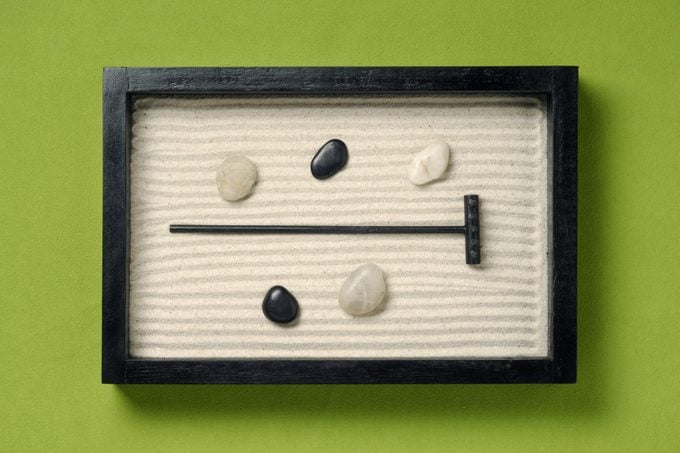
Need more guidance on how to meditate? Keep reading for answers to your most pressing questions.
Help! My mind won’t stop wandering. What do I do?
“When you find your mind wandering during meditation, one way to bring your attention back is by saying my favorite mantra: ‘I don’t have to think about that right now,'” Tsomo says.
New meditators often wonder what they should be thinking about or if they should be thinking about anything. The concept of “emptying the mind” can be confusing in the beginning.
“One analogy I find myself returning to often is that training your mind is sort of akin to training a puppy,” she says. “Think of your mind as a rambunctious puppy that’s distracted by everything. In our mind, we want to chase after every thought. We occupy our minds with the things we want and try our hardest to push away the things we don’t want. It’s all pretty exhausting. In meditation, our goal is to work with this puppy mind of ours.”
So when the “puppy” chases a stray thought—about the purpose of life or that really embarrassing thing you did the other day—call it back to the present moment.
How do you know if you are meditating correctly?
Chances are, you’re meditating correctly. If your wandering mind has you doubting yourself, banish the thought. Tsomo reminds us that meditation isn’t about making your mind stop.
Many beginners say they try to meditate, but their mind keeps wandering to the grocery list. But that’s totally normal. “Remembering that you’re meditating is good,” Tsomo says. “That means you’re doing it right!”
How often do I need to meditate?
You’re not expected to sit in meditation for an hour when you’re first getting started, and just a few minutes is enough. Still, you should aim to meditate daily. If you’re sitting for shorter sessions as a way to fit it into your schedule, you can meditate several times in one day.
When is the best time of day to meditate?
“The best time to meditate is the time that works for you,” Tsomo says. “That can be day or night, or even during a lunch break on a busy day.”
Now that you know how to meditate, tackle other aspects of living a happier, healthier life, like learning strategies to set boundaries in your relationships and finding a hobby that’ll bring you joy.
Sources:
- Nina Smiley, PhD, director of mindfulness programming at Mohonk Mountain House and co-author of The Three Minute Meditator and Mindfulness in Nature
- Lama Tsomo, psychologist, author and co-founder of the Namchak Foundation
- Tara Well, PhD, associate professor of psychology at Columbia University’s Barnard College
- Frontiers in Psychiatry: “The Effects of Meditation, Yoga, and Mindfulness on Depression, Anxiety, and Stress in Tertiary Education Students: A Meta-Analysis”
- Neuroreport: “Meditation experience is associated with increased cortical thickness”
- Psychiatry Research: “Mindfulness practice leads to increases in regional brain gray matter density”
- Washington Post: “Harvard neuroscientist: Meditation not only reduces stress, here’s how it changes your brain”
- National Center for Complementary and Integrative Health: “Meditation and Mindfulness: What You Need to Know”
- National Center for Complementary and Integrative Health: “Mindfulness-Based Stress Reduction, Cognitive-Behavioral Therapy Shown to Be Cost Effective for Chronic Low-Back Pain”
- Scientific Reports: “Open monitoring meditation reduces the involvement of brain regions related to memory function”

















